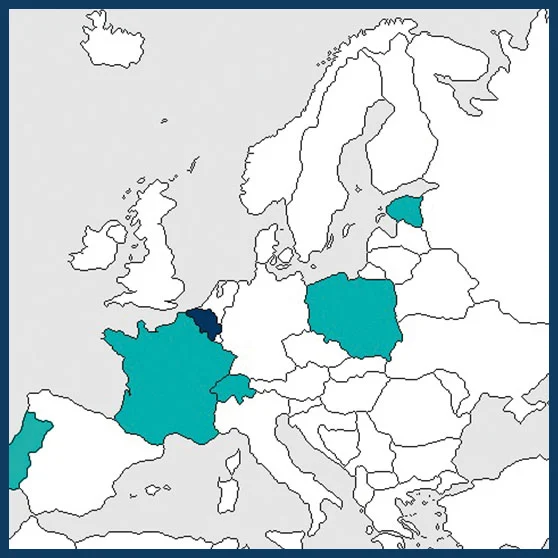02-2017 to 02-2020
€ 1,164,649
Prof. Roeland Samson
roeland.samson@uantwerpen.be
University of Antwerp, Antwerp, BELGIUM (Coordinator)
Estonian University of Life Sciences, Tartu, ESTONIA
French National Institute for Agricultural Research, Paris, FRANCE
Université Paris Sud, Orsay, FRANCE
Poznan University of Life Sciences, Poznan, POLAND
Universidade de Lisboa, Lisbon, PORTUGAL
WSL Swiss Federal Research Institute, Birmensdorf, SWITZERLAND

Urban green areas have been shown to support native biodiversity, enhance eco- system functions and provide important ecosystem services. Nevertheless, urban green and blue infrastructure (GBIs) are fragmented and isolated.
GBI enhances the permeability for biodiversity through dense and hostile urban matrices. However, the effectiveness of these GBI depends on several factors, in particular their structural complexity, management regime, and spatial configura- tion.
The main objective of the BIOVEINS project is to use functional diversity (FD) to highlight the mechanisms underpinning the link between GBI, taxonomic diversity (TD) and ecosystem services (ESs) provisioning.
Seven cities were selected along a S-N and W-E gradient throughout Europe al- lowing to include several climates and different types of urbanization (i.e. Almada, Antwerp, Lisbon, Paris, Poznan, Tartu, Zurich).
Together with local stakeholders, the ecological and interdisciplinary knowledge will be provided to identify the critical features of GBI, to guide the establishment, management and restoration of GBI, and to mitigate the effects of major urban global challenges.
This main objective will be accomplished through several specific objectives by:
1. Analysing the actual and planned GBI from an urban planning perspective, and determine sampling plots;
2. Assessing the FD for a variety of taxonomic groups (i.e. woody and flower plants, leaf-dwelling bacteria, herbivorous mites, other arthropods, lichens, birds and bats) to link the considered taxa to ESs (e.g. flood protection, fixation of air pollution, pollination, climate regulation, pest control; etc.) and to determine the importance of GBI connectivity on urban biodiversity;
3. Assessing the impact of proportion, configuration and connectivity of urban GBI on provisioning and regulating ESs by an experimental and modelling approach; and
4.Providing tools, best practices, and guidelines about how to improve urban GBI and how to enhance multiple ESs for people and nature.
To reach the above mentioned objectives, the following activities will be imple- mented:
• Selection of sampling sites in each involved city, selected along a S-N and W-E gradient.
• Assessment of biodiversity and ESs’ indicators in these sampling sites for dis- tinctive taxonomic groups of plants and animals differing in their dispersion ability.
• Assessment of connectivity and size effect of urban GBI on the provision of ESs by a three-dimensional microclimate modelling approach.
• Involvement of citizens by several distinctive citizen science initiatives.
• Development of tools to guide the establishment, management, restoration and monitoring of urban GBI by involving local stakeholders.
Regular meetings between local scientists and various stakeholders will be organised during the project, as well as a general stakeholder meeting. Besides the more common scientific output dissemination via publications and scientific meetings, the project also will intensively communicate project results by setting up various citizen science projects.